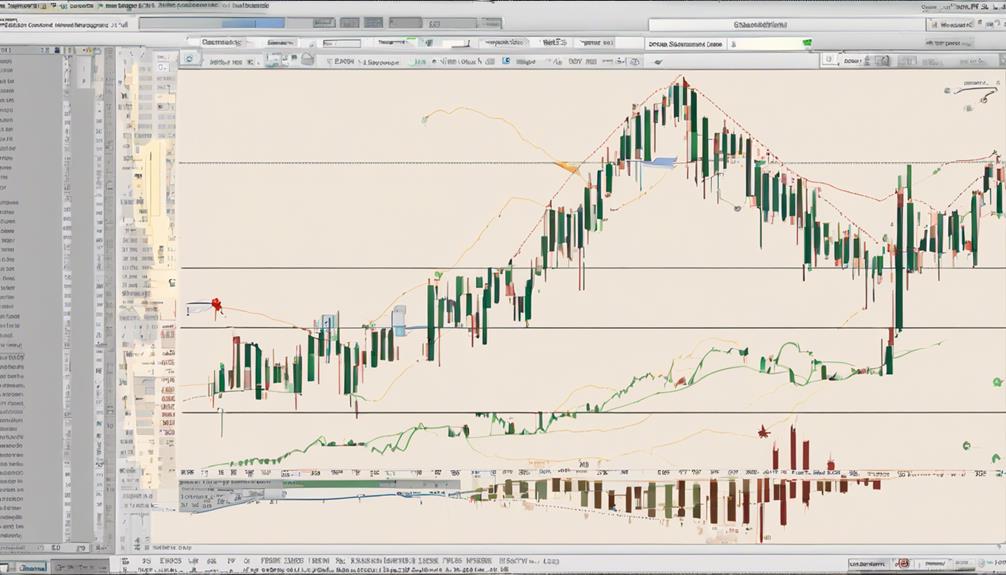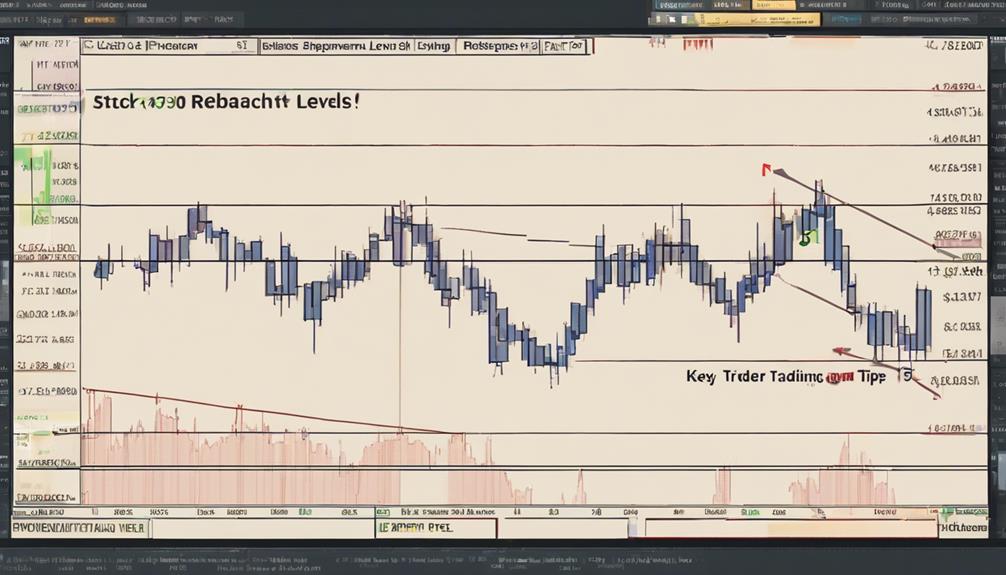When it comes to Fibonacci retracement trading, remember the old saying, 'The trend is your friend.'
By exploring the three best approaches to utilizing Fibonacci retracement levels effectively, you can significantly enhance your trading skills.
Understanding the golden ratio, identifying key support and resistance areas, and integrating Fibonacci strategies with other technical indicators are vital components of successful Fibonacci trading techniques.
These methods can offer traders a strategic advantage in navigating the complexities of financial markets, leading to more informed decision-making and improved trading outcomes.
Fibonacci Retracement Strategies
When implementing Fibonacci retracement strategies in trading, it's crucial to identify key support and resistance levels based on Fibonacci ratios such as 23.6%, 38.2%, 50%, 61.8%, and 100%. Fibonacci retracement levels serve as a valuable tool for traders, offering insight into potential price movements and areas of interest.
By utilizing these levels, traders can anticipate possible reversals or continuations in trends, aiding in decision-making processes. This strategy is particularly popular in forex, stocks, and cryptocurrency trading due to its ability to provide structured guidelines for analyzing price action.
The Fibonacci retracement tool, when combined with other technical indicators, enhances the precision and reliability of trading strategies, offering traders a comprehensive approach to market analysis.
Fibonacci Extension Techniques

Incorporating Fibonacci extension techniques into your trading strategy allows you to set profit targets beyond the regular Fibonacci retracement levels, enhancing your ability to capture additional gains and maximize profits. Fibonacci extension levels, such as 127.2%, 161.8%, and 261.8%, offer insightful points for profit-taking based on the Fibonacci sequence.
The 127.2% extension is often used for conservative profit targets, while the 161.8% and 261.8% extensions are suitable for strong trending markets. By utilizing Fibonacci extensions alongside trend analysis, traders can identify potential price extension levels and improve their overall trading approach.
This integration of Fibonacci extensions into your strategy can play a crucial role in maximizing profits and optimizing your trading performance.
Fibonacci Trading Tips

To enhance your Fibonacci trading skills effectively, consider implementing these insightful tips for maximizing your trading performance and profitability.
- Combine Fibonacci Retracement Levels with Other Technical Analysis Tools:
Look for confluence between Fibonacci levels and indicators like moving averages or trendlines to strengthen your trade setups.
- Utilize Fibonacci Ratios for Price Action Analysis:
Understand how the key Fibonacci ratios can signal potential price reversal points and use this knowledge to make informed trading decisions.
- Identify Entry and Exit Points in Trending Markets:
In trending markets, use Fibonacci retracement levels to pinpoint optimal entry and exit points, enhancing your overall trading strategy.
What Are the Best Practices for Fibonacci Retracement Trading?
When it comes to Fibonacci retracement trading, there are a few essential Fibonacci retracement tips to keep in mind. First, identify strong trends to use as reference points. Second, wait for a clear price reversal before making any trades. Lastly, use other technical indicators to confirm retracement levels for better accuracy.
Frequently Asked Questions
What Is the Most Effective Fibonacci Retracement Level?
The most effective Fibonacci retracement level is often the 61.8% level, known as the 'golden ratio.' Traders use this level to pinpoint potential support or resistance. It's crucial for indicating trend continuation or reversal.
Which Indicator Works Best With Fibonacci Retracement?
When using Fibonacci retracement, the Relative Strength Index (RSI) stands out as a strong companion for confirming potential market reversals. Its ability to gauge overbought or oversold conditions can help you make informed trading decisions.
Do Professional Traders Use Fibonacci Retracement?
Yes, professional traders extensively utilize Fibonacci retracement for strategic market analysis, risk assessment, and trade planning. The tool's accuracy in predicting price levels and trend movements makes it a valuable asset in trading practices.
Which Timeframe Is Best for Fibonacci Retracement?
For Fibonacci retracement, the best timeframe depends on your trading style. Short-term traders favor 15-minute or 1-hour charts, while swing traders opt for daily or weekly charts. Long-term investors find monthly or quarterly charts beneficial.
Conclusion
As you navigate the complex world of Fibonacci retracement trading, remember that Fibonacci levels are like a compass guiding you through the market's twists and turns.
By mastering the three best approaches outlined in this article, you can unlock the potential for greater trading success. Keep honing your skills, combining Fibonacci strategies with other technical indicators, and watch your trading outcomes soar to new heights.
Happy trading!
